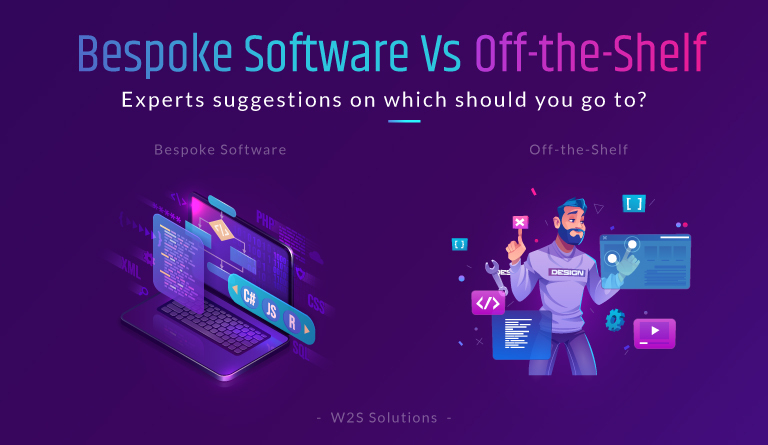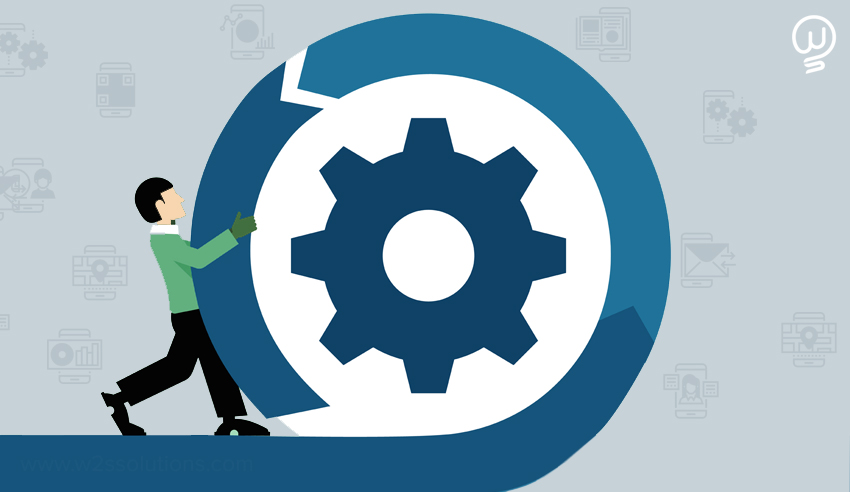TABLE OF CONTENT
While the term design thinking can be easily interpreted as something that’s only for the designers, that cannot be further from the truth. The “design” in design thinking refers to the solution that’s crafted by the teams to solve a particular problem. It refers to all the aspects of that particular solution that a user gets to interact with. While it’s inspired by the different schools of thought in the design field and how designers approach a problem or arrive at a solution, design thinking is more about the essence of the process than the process itself.
In simple words, design thinking is an approach to problem-solving that puts the human or the human element at the center of the solution.
Speaking of the human element, teams that adopt the design thinking approach to solve problems prioritize empathizing with their users, identifying the pain points at all levels, and delivering a solution that works on solving these pain points. There is no right or wrong approach, but just the approach that works. Meaning, teams are built in such a way that they are able to see a problem under different lights. For example, at W2S Solutions, we focus on building teams of diverse backgrounds and talents. As they start working together to arrive at a solution, they will have all the possible approaches in front of them. And one of the crucial traits of the team would be to challenge the known- that’s how they build solutions that touch people’s lives.
What are the stages of design thinking?
The success of this method in successful organizations such as Google, Apple, Toyota, and Nike is the crucial reason for its appeal. Here are the critical design thinking phases outlined in this blog, which have helped numerous businesses prosper.
1. Know thy user
The first process in the design thinking steps is empathizing with the problem you’re attempting to address. Look for people who have previously encountered this difficulty to get an accurate portrayal of how the problem affects people. Because of the human-centric aspect of the design thinking approach, asking them how they would have preferred the issue fixed is an intelligent place to start. The end goal is to deliver solutions that are not just versatile but also inclusive.
And inclusive solutions work for everyone, but how design thinking helps the process by challenging the status quo- the preconceived notions about the users and their problems, allowing the team to rediscover and deliver a solution that works at all levels.
2.Define the stage
Sometimes a designer will find a circumstance in which there is a general issue but no specific problem that has to be handled. Creating human-centric problem statements can help designers accurately define and outline a problem. An issue statement aids in framing a problem by providing the necessary background understandably.
3.Conceptualization
This is the stage during which designers brainstorm potential solutions to the challenge stated in the problem statement.
Here are some techniques you can follow to find a solution:
- Typical brainstorming session: Your team gathers and verbally discusses various ideas.
- Brainwrite: Everyone writes their thoughts on paper or sticky notes, then each team member writes their ideas on the whiteboard.
- Worst-case scenario: The inverse of your ultimate desire. Your team comes up with the most ridiculous idea so that no one looks dumb. Other brainstorming strategies lose their rigidity as a result of this. By examining the worst features of an absurd solution, you can uncover areas in your actual solution where you might improve.
You mustn’t dismiss any ideas throughout the brainstorming ideation process. You want as many viable answers as possible since new ideas can spark even better ones.
4.The prototyping stage
During the prototype phase, you and your team create a few variations of low-cost or scaled-down prototypes of the prospective problem solution. Other designers, team members outside the primary design department, and trusted customers or target audience members are frequently used to test prototypes. It is critical to document the testers’ use of the final product during this step. These insights will be crucial in understanding the psyche of the user, and how they view or interact with the platform.
Advantages of practicing design thinking
Adopting a design thinking approach to problem-solving offers numerous benefits for organizations. Here are some key advantages:
1. Customer-centric solutions:
The consumer is at the core of problem-solving efforts when using design thinking. By deeply understanding user needs, motivations, and pain points, organizations can develop solutions that resonate with their target audience. This approach allows the business to set clear expectations for the users, which will narrow down the target users even better, yielding better conversion, engagement, and satisfaction rates.
2. Innovation and creativity:
Design thinking encourages exploration, experimentation, and outside-the-box thinking. This approach enables teams to challenge assumptions, break through conventional boundaries, and uncover new opportunities for growth and differentiation.
3. Collaboration and cross-functional teamwork:
Cross-functional teamwork and collaboration are encouraged by design thinking. By involving stakeholders from different disciplines, teams can leverage a diverse range of expertise and perspectives. This collaborative approach breaks down silos, enhances communication, and fosters a collective sense of ownership and responsibility toward solving the problem.
4. Rapid prototyping and iteration:
By creating tangible prototypes early in the process, organizations can gather valuable feedback and insights from users and stakeholders. This iterative approach allows quick adjustments, refinements, and course corrections, resulting in more effective and user-centered solutions.
5. Risk mitigation:
Design thinking encourages organizations to identify and address potential risks and challenges early in the problem-solving process. By involving users and stakeholders in the feedback loop, organizations can validate assumptions, test hypotheses, and minimize the risk of investing resources in solutions that may not meet user needs or achieve desired outcomes. This iterative and user-centric approach reduces the chances of costly failures and increases the likelihood of success.
6. Empowered and engaged teams:
Design thinking empowers teams by giving them the tools and methodologies to tackle complex problems. It encourages a culture of continuous learning, experimentation, and growth. It also allows the team to learn and unlearn things, pushing them toward the inflection point from which they are likely to find an alternative or out-of-the-box approach to the problem.
How does implementing design thinking enable better business outcomes?
Design can play a crucial role in identifying complex business challenges by providing a unique lens through which organizations can examine their operations, products, and services. Here’s how design can help identify such challenges:
-
Human-centered perspective
The design focuses on understanding and addressing users’ needs, placing humans at the center of problem-solving efforts. This perspective allows designers to uncover complexities arising from user expectations, emotions, and behaviors. By empathizing with users, designers can identify challenges that may occur due to a lack of user-friendly interfaces, confusing design thinking processes, or ineffective communication.
-
Mapping customer journeys
Customer journey mapping is a design technique that visualizes customers’ end-to-end experience. This process helps identify pain points, bottlenecks, and inconsistencies throughout the customer journey. By examining these touchpoints, designers can uncover complex challenges related to customer engagement, satisfaction, and loyalty.
-
Visualizing data
Designers excel at visualizing complex data and analytics, transforming raw information into meaningful insights. By creating data visualizations and infographics, designers can identify patterns, trends, and outliers that may reveal underlying challenges. Visualizing data clearly and intuitively enables organizations to make informed decisions and take action on complex problems.
-
Design thinking workshops
Design thinking workshops bring together cross-functional teams to tackle complex challenges collaboratively. By facilitating creative exercises, brainstorming sessions, and ideation activities, designers can elicit diverse perspectives and uncover hidden complexities. These workshops provide a platform for stakeholders to voice their concerns and collectively identify complex business challenges.
-
Design audits and assessments
Designers can conduct audits and assessments of existing products, services, or processes to identify areas of improvement. By evaluating usability, aesthetics, and functionality, designers can pinpoint complex challenges that hinder user satisfaction, operational efficiency, or market competitiveness. These assessments provide a comprehensive overview of design-related complexities within an organization.
-
Competitive analysis
Designers can analyze the design strategies and experiences of competitors to identify gaps and challenges. By benchmarking against industry leaders and conducting competitive analysis, designers can identify areas where an organization may fall behind or miss opportunities. This analysis helps uncover complex challenges related to market positioning, differentiation, and innovation.
Why design thinking doesn’t work for some organizations?
The base of design thinking is collaboration, and there are many reasons why it may not work for some organizations. For example, in traditional organizations where strict hierarchies are in place, design thinking will not create the impact it does in modern enterprises. At the end of the day, it’s about finding the right approach that allows your company to strike the perfect balance between maintaining the pace of operations and innovations.
Here are some of the reasons why the approach is not working for your organization.
Resistance to Change
Some employees may be reluctant to embrace new methodologies or ways of working. To address this challenge, it is essential to communicate the value and benefits of design thinking, highlighting how it can drive innovation, improve customer experiences, and achieve business goals. Providing training, workshops, and success stories can help create buy-in and enthusiasm among employees.
Organizational Culture
If the existing culture does not prioritize collaboration, creativity, and user-centricity, implementing design solutions may face hurdles. Organizations can overcome this obstacle by cultivating a culture that supports experimentation, embraces multiple perspectives, and rewards innovative thinking. Leadership support is crucial in driving this cultural shift.
Lack of Resources
Implementing design solutions may require dedicated resources, such as skilled designers, time, and financial investment. Limited resources can pose a challenge, especially for small or resource-constrained organizations. To address this challenge, organizations can consider cross-functional collaboration, leveraging existing talent, and seeking external partnerships or alliances. Prioritizing design investments and demonstrating the return on investment can also help secure necessary resources.
Integration with Existing Processes
Traditional organizational structures and functions may not be designed to accommodate the iterative and user-centered nature of design thinking. To overcome this challenge, organizations can start small by identifying pilot projects or cross-functional teams to apply design thinking methodologies. Gradually, the success of these initiatives can help demonstrate the value of design and encourage broader integration into existing processes.
Metrics and Evaluation
Measuring the impact and effectiveness of design solutions can be challenging, especially when traditional metrics may not fully capture the value of design thinking. To address this challenge, organizations can define appropriate metrics that align with the goals of design solutions, such as customer satisfaction, user engagement, or time saved in completing tasks. Conducting post-implementation evaluations and gathering user feedback can provide valuable insights to refine and improve design solutions.
Communication and Collaboration
Silos and lack of communication can hinder the integration of design thinking. To overcome this challenge, organizations should promote cross-functional collaboration, establish clear channels for communication, and encourage transparency and knowledge-sharing. Regular meetings, workshops, and project updates can foster a collaborative environment.
Sustaining Momentum
Design thinking should be viewed as an ongoing and iterative process rather than a one-time initiative. Sustaining momentum and embedding design thinking as a continuous practice can be challenging. To overcome this, organizations should invest in ongoing employee training and professional development, establish internal design communities or centers of excellence, and celebrate and share success stories to inspire and motivate teams.
Where to start?
Following the principles of design thinking or building your own design thinking framework is a difficult and time-consuming process. But when done right, it can be a huge step in transforming the very DNA of your organization. Companies can start small, experiment with teams, and solve problems that add instant value to the organization, but they can also partner with other technology solutions providers to accelerate this process. We recently worked with one of the biggest organizations in the Indian education sector to digitize their operations and transform the learning experiences of the students. We collaborated with their internal teams to build a seamless e-learning platform that brings together various user groups like students, teachers, and parents. You can know more about the project in this link- https://bit.ly/433Ixdw
Get inspired!
Subscribe to our newsletter and get updates on how to navigate through disruption and make digital work for your business!





